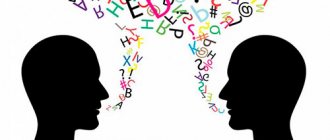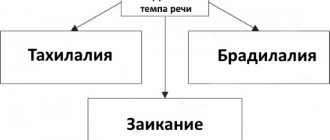Every parent loves to watch their child's development. With every month of his life, the range of his skills and abilities grows. Therefore, if the baby does not speak or uses 2-3 words, adults begin to worry.
Expressive speech in children can be developed late for various reasons. These include organic lesions, psychological stress and much more. With this problem, understanding of spoken speech is preserved. That is, such children can show with a gesture what they need, take their mother by the hand.
General information
In speech therapy, this disorder is identified as general speech underdevelopment (GSD). It can be on several levels. As a rule, it is advisable to talk about problems by the age of three. This is a critical period for speech development. If by this time the situation has not improved, then parents should visit specialists.
First of all, they turn to a neurologist. After which it is advisable to listen to a psychiatrist, audiologist (to determine the level of hearing) and only then a speech therapist.
Not every parent knows what exactly is considered developmental delays. By the age of one year, a child should speak 10 words. Usually they are simple “mom”, “dad”, “give”, etc. The use of onomatopoeia “ava”, “kisa”, “bibi”, etc. is allowed.
By two years, the active vocabulary already consists of 200 words, there is a simple phrase “I eat”, “give Masha”, etc. By three years the figure increases to 800 words, parts of speech, prepositions and some sounds appear.
Speech continues to develop even after three years. Therefore, if it begins to seriously lag behind the norm, it will be difficult to catch up. Problems with speech are fraught with disruption of all other mental functions:
- memory;
- thinking;
- attention, etc.
If a child at three years old has no words or only 2-3, parents should worry and start acting.
Alternative interpretation of the term
The term “expressive speech” refers not only to the types of speech and the features of its formation from the point of view of neurolinguistics. It is the definition of the category of styles in the Russian language.
Expressive styles of speech exist in parallel with functional ones. The latter include bookish and conversational. Written forms of speech are journalistic style, official business and scientific. They belong to book functional styles. Conversational is represented by the oral form of speech.
Means of expressive speech increase its expressiveness and are designed to enhance the impact on the listener or reader.
The word “expression” itself means “expressiveness”. The elements of such vocabulary are words designed to increase the degree of expressiveness of oral or written speech. Often, several expressive synonyms can be selected for one neutral word. They may vary depending on the degree of emotional stress. There are also often cases when for one neutral word there is a whole set of synonyms that have exactly the opposite connotation.
The expressive coloring of speech can have a rich range of different stylistic shades. Dictionaries include special symbols and notes to identify such synonyms:
- solemn, high;
- rhetorical;
- poetic;
- humorous;
- ironic;
- familiar;
- disapproving;
- dismissive;
- contemptuous;
- derogatory;
- sulgaric;
- abusive.
The use of expressively colored words must be appropriate and competent. Otherwise, the meaning of the statement may be distorted or take on a comical sound.
Main reasons
Children's age is sensitive to various kinds of influences. Severe pregnancy, childbirth, illness and head injuries will negatively affect its development.
In recent years, the number of children with such pathologies has only been growing. Experts attribute this to various reasons. Some believe environmental degradation plays a role. Others highlight the main risk factors:
- chronic diseases of the father and mother;
- age of women in labor;
- bad habits (alcohol, drugs, smoking);
- trauma during childbirth.
There are also so-called social factors. An increase in the number of smartphones, tablets, 24-hour television. Many cartoons and games for children with advertising easily attract the attention of the baby. Therefore, they lose the need to study and interact with the outside world.
In many cartoons, acid colors and shrill mechanical voices predominate - all this quickly captures the child and his attention. After which he is of little interest in the ordinary speech of an adult.
When communicating with other children and adults, he looks at the face and unconsciously tries to repeat the movements of the organs of articulation. Without such visual contact, it will be difficult for him to make sounds.
Expressive speech styles
Representatives of modern science of language classify the following styles as:
- Solemn.
- Familiar.
- Official.
- Jocular.
- Intimately affectionate.
- Mocking.
The contrast to all these styles is neutral, which is completely devoid of any expression.
Emotionally expressive speech actively uses three types of evaluative vocabulary as an effective means of helping to achieve the desired expressive coloring:
- The use of words that have a clear evaluative meaning. This should include words that characterize someone. Also in this category are words that evaluate facts, phenomena, signs and actions.
- Words with significant meaning. Their main meaning is often neutral, however, when used in a metaphorical sense, they acquire a rather bright emotional connotation.
- Suffixes, the use of which with neutral words allows you to convey a variety of shades of emotions and feelings.
In addition, the generally accepted meaning of words and the associations attached to them have a direct impact on their emotional and expressive coloring.
Diagnosis differentiation
Expressive language disorder refers to several possible illnesses. They go under the code F80.1. First of all, this is the actual delay in speech development (SDD). Expressed in the absence of speech or its insufficient level.
The next thing is motor alalia. This is a serious violation that should not be confused with ZRR. It affects specific areas of the cerebral cortex and is visible on MRI. In the case of ZRD, we are talking about the immaturity of the nervous system, but it is successfully overcome and, to some extent, partially eliminates itself.
Another diagnosis that is included in this group is aphasia, that is, speech breakdown. It occurs due to stroke, head injuries and serious illnesses (tumors, meningitis). In children, this disorder is rarely detected. It can appear only closer to school age. Such a disorder will also be visible on MRI, since the cerebral cortex is affected.
It is not always easy to separate mutism from delay. This problem is characterized by normal speech development, but a complete reluctance to use it. This happens for various psychological reasons. Most often, the child agrees to communicate only with certain people, for example, with the teacher. He doesn't use the pointing gesture.
Hearing and intellectual impairments must be excluded. With these disorders, speech may be limited to simple imitation or completely absent.
Some specialists make a diagnosis of LDRD - delayed psycho-speech development. According to neurologists, such a concept does not exist. The child must have either mental development disorder or mental development delay (MDD).
Sequence of the examination process
Thanks to the correct formulation of the examination process, it is possible to identify various skills and abilities by studying one type of activity. This organization allows you to fill out more than one item on the speech card at one time over a short period of time. An example is a speech therapist’s request to tell a fairy tale. The objects of his attention are:
- pronunciation of sounds;
- diction;
- skills in using the vocal apparatus;
- the type and complexity of sentences used by the child.
The information received is analyzed, summarized and entered into certain graphs of speech cards. Such examinations can be individual or carried out for several children at the same time (two or three).
The expressive side of children's speech is studied as follows:
- Studying the volume of vocabulary.
- Observation of word formation.
- Study of the pronunciation of sounds.
Also of great importance is the analysis of impressive speech, which includes the study of phonemic awareness, as well as monitoring the understanding of words, sentences and text.
Characteristics of children
Classes with children with speech disorders should begin as early as possible. They are conducted by a speech therapist. To better structure the work, it is necessary to take into account all the features of the violation.
Children with mental retardation have the following characteristics:
- low level of attention;
- limited auditory memory;
- reduced cognitive interest.
The semantic and logical part of thinking is usually normal, but following instructions of 3-4 steps is difficult. The sequence may change or certain elements may be lost.
Non-critical motor impairments may be observed. Such children are awkward, slow, and do not perform complex sequences of actions well.
There are also problems with the development of fine motor skills. Interest in drawing is reduced, lacing and other delicate actions are difficult.
In the absence of timely treatment and correctional assistance, secondary intellectual impairment occurs. The later a speech therapist appears in a child’s life, the more difficult it will be to compensate for the defect.
Medical and psychological support is required. A competent neurologist will help correct the functioning of the nervous system, and a psychologist will develop mental functions such as memory, thinking, attention.
A specific description of the child’s problems will allow specialists to competently organize their actions.
Agraphia as a separate manifestation of expressive language disorder
Agraphia is the loss of the ability to write correctly, which is accompanied by preservation of motor function of the hands. It occurs as a consequence of damage to the secondary associative fields of the cortex of the left hemisphere of the brain.
This disorder becomes concomitant with oral speech disorders and is extremely rarely observed as a separate disease. Agraphia is a sign of a certain type of aphasia. As an example, we can cite the connection between damage to the premotor area and a disorder of the unified kinetic structure of writing.
In the case of minor damage, a person suffering from agraphia may correctly write specific letters, but may misspell syllables and words. It is likely that there are inert stereotypes and a violation of the sound-letter analysis of the composition of words. Therefore, such people find it difficult to reproduce the required order of letters in words. They may repeat individual actions several times that disrupt the overall writing process.
Sample work plan
The disorder is based on problems with all parts of speech. Therefore, at the first stage, it is important not only to practice sound pronunciation, but also to evoke any response speech. Even in the form of elementary onomatopoeia.
Be sure to develop the child’s perception. To do this, he is introduced to different materials. For example, they let you sort through cereals, beads, and sand. You can show fruits and vegetables, offering to smell, touch, and taste them.
The development of fine motor skills directly affects speech, since these two areas of the cortex are located nearby in the brain.
The more impressions there are in the baby’s life, the better. The main thing is not to overdo it. Excessive emotions provoke stuttering.
At the first stage, the speech therapist’s task is to create a desire to contact and interact. To do this, they use finger theater, toys and simple onomatopoeia, like “Who says what?”
In severe cases, children do not use the pointing gesture. In this case, they forcefully take the hand, fold their fingers and point at the toy or picture with the index finger.
The Novikova-Ivantsova technique has proven itself well. It is based on singing vowel sounds. With motor alalia, it is sometimes difficult for children to make a certain arrangement of the organs of articulation. In this case, it is done forcibly. The adult uses his fingers to purse his lips and move the child’s jaw.
Don't be afraid of crying or other negative emotions. This is a normal reaction due to the immaturity of the cerebral cortex.
After you manage to get the first words, you need to try to build phrases. For example, showing a picture and saying: “Mom, go.” Be sure to achieve not only the reproduction of the phrase, but also the understanding of what was said.
The child must be able to correlate the image and the phrase. Only then will his speech develop. Work is definitely underway to practice sound pronunciation. To begin with, they work on the sounds of early ontogenesis: vowels, back-lingual (“K”, “G”, “X” and soft pairs), labials (“V”, “F” and others).
Articulation gymnastics in front of a mirror is mandatory. From the first lessons, the speech therapist teaches the child to control himself. Only after this will you be able to achieve results.
Correctional work to eliminate expressive speech disorder lasts 2-3 years. In severe cases, it takes up to five years. Parents also need help, since only they are able to conduct classes every day and do homework with the child.
Sometimes at school age there may be difficulties with writing and reading, which are expressed in specific errors. In this case, a speech therapist will help.
Impressive and expressive speech: what is it?
Impressive speech is a mental process that accompanies the understanding of various types of speech (written and oral). Recognition of speech sounds and their perception is a complex mechanism. The most actively involved in it are:
- sensory speech area in the cerebral cortex, also called Wernicke's area;
- auditory analyzer.
Impaired functioning of the latter provokes changes in impressive speech. An example is the impressive speech of deaf people, which is based on recognizing spoken words by lip movements. At the same time, the basis of their written impressive speech is the tactile perception of three-dimensional symbols (dots).
Schematically, Wernicke's area can be described as a kind of card index containing sound images of all words acquired by a person. Throughout his life, a person refers to this data, replenishes and corrects it. As a result of damage to the zone, the sound images of words stored there are destroyed. The result of this process is the inability to recognize the meaning of spoken or written words. Even with excellent hearing, a person does not understand what is being said (or written) to him.
Expressive speech and its types are the process of pronouncing sounds, which can be contrasted with impressive speech (their perception).








